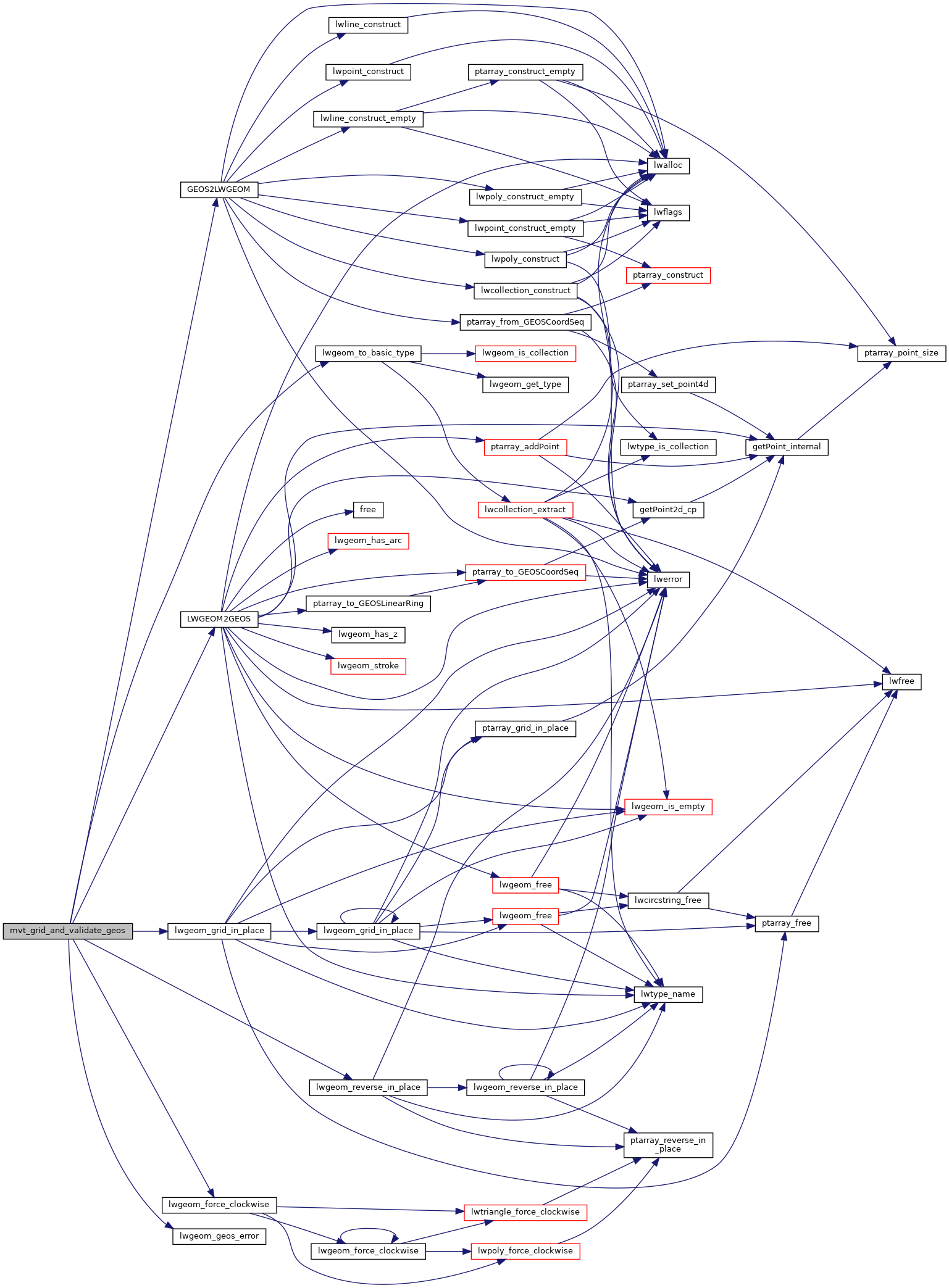◆ mvt_grid_and_validate_geos()
Given a geometry, it uses GEOS operations to make sure that it's valid according to the MVT spec and that all points are snapped into int coordinates It iterates several times if needed, if it fails, returns NULL.
Definition at line 1020 of file mvt.c.
GEOSGeometry * LWGEOM2GEOS(const LWGEOM *lwgeom, uint8_t autofix)
Definition: liblwgeom/lwgeom_geos.c:390
LWGEOM * GEOS2LWGEOM(const GEOSGeometry *geom, uint8_t want3d)
Definition: liblwgeom/lwgeom_geos.c:166
void lwgeom_force_clockwise(LWGEOM *lwgeom)
Force Right-hand-rule on LWGEOM polygons.
Definition: lwgeom.c:37
void lwgeom_grid_in_place(LWGEOM *lwgeom, const gridspec *grid)
Definition: lwgeom.c:2144
static LWGEOM * lwgeom_to_basic_type(LWGEOM *geom, uint8 original_type)
In place process a collection to find a concrete geometry object and expose that as the actual object...
Definition: mvt.c:823
References GEOS2LWGEOM(), LWGEOM2GEOS(), lwgeom_force_clockwise(), lwgeom_geos_error(), lwgeom_grid_in_place(), lwgeom_reverse_in_place(), lwgeom_to_basic_type(), and POLYGONTYPE.
Referenced by mvt_clip_and_validate_geos().
Here is the call graph for this function:

Here is the caller graph for this function:
